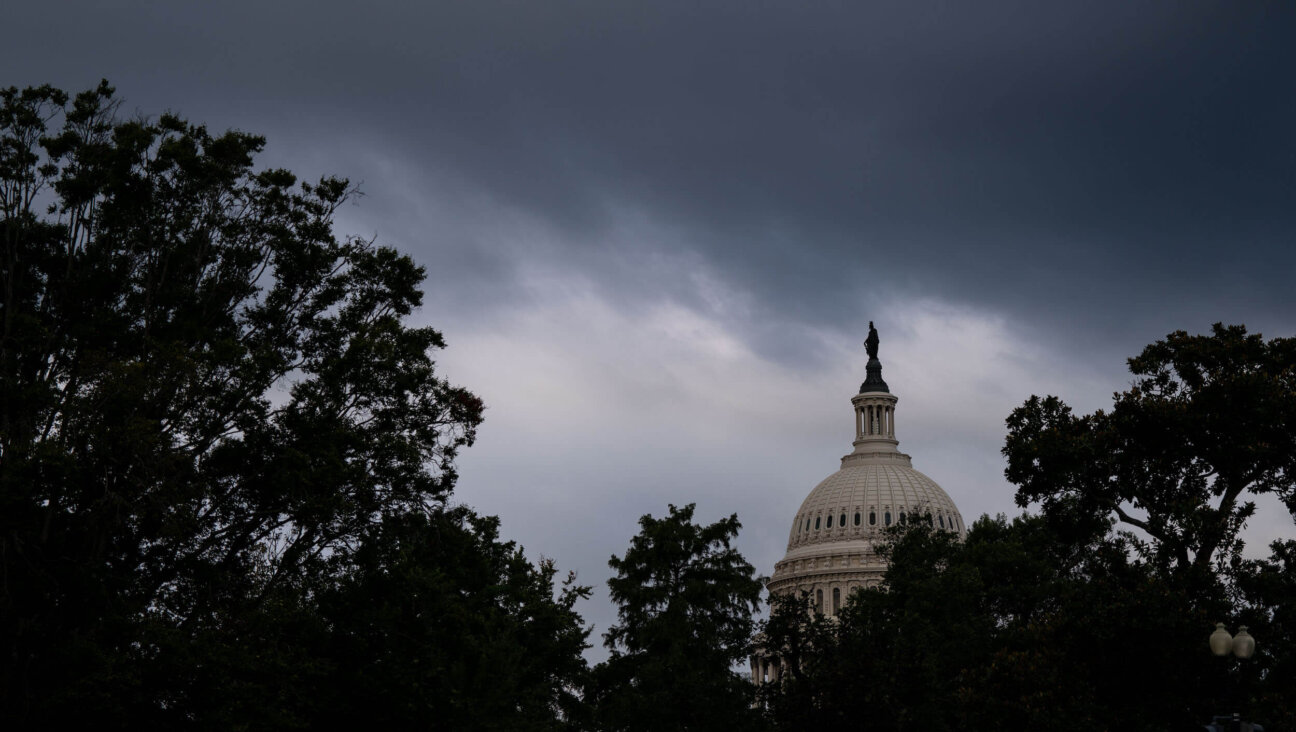Kvelling in the Aisles at Folksbiene: Tilson Thomas Thomashevsky Theatre Gala

Sylvia Steiner, Michael Tilson Thomas, and David Steiner
Kvelling in the Aisles at Folksbiene: Tilson Thomas Thomashevsky Theatre Gala
Before the over-the-top theatrical saga of Bessie and Boris Thomashefsky was showcased at Lincoln Center’s Avery Fisher Hall, there was noshing and shmoozing at the April 6 reception for the National Yiddish Theater-Folksbiene gala held on the Promenade, at which Michael Tilson Thomas, music director of the San Francisco Symphony, and Folksbiene boosters David and Sylvia Steiner were honored. Folksbiene board chairman Jeffrey Wiesenfeld introduced Joseph Benincasa, president and CEO of The Actors Fund. “I was an altar boy… the Jesuits insisted that I attend ‘Fiddler on the Roof… the ‘roof’ is a metaphor for survivorship. The Yiddish theater needs to be sustained,” said Benincasa, who presented the Folksbiene award to the Steiners. “I have a dream,” said David Steiner, chairman of Steiner Equities Group and founder of Steiner Studios in Brooklyn, “of when the Folksbiene will have its own theater in New York.” Tilson Thomas accepted the Folksbiene award from world-renowned architect Frank Gehry, who informed, “My father came from Lodz” and that he remembered “going to the Yiddish theater.” Lauding the Folksbiene for “keeping this tradition alive,” Tilson Thomas credited “my grandmother Bessie [Thomashefsky], with whom I grew up in Los Angeles … for shaping the world in which I live.” With Folksbiene’s artistic director, Zalmen Mlotek, at the piano, an eight-strong ensemble performed a gut-wrenching interpretation of “The Ballad of the Triangle Fire/Bread and Roses” in honor of the 100th anniversary of the Triangle Shirtwaist Factory Fire, March 25, 1911.
Following the awards, it was into the concert hall for a multi-media treat: “The Thomashefskys: Music and Memories of a Life in the Yiddish Theater,” narrated and directed by Tilson Thomas. The audience was enthralled. Rapt silence was punctuated by laughter, applause and, at Tilson Thomas’s invitation, hand clapping along with the music. Alternating among conducting the orchestra, narrating the family’s history, and commenting on the projections and action on the screen, Tilson Thomas commented on the antics and achievements of his bubbe-zayde, or grandparents, as Judy Blazer deliciously impersonated a young and then older Bessie. At 15, Bessie married an already scandal-ridden 19-year-old Boris Thomashefsky, portrayed by Shuler Hensley. Ronit Widmann-Levy and Eugene Brancoveanu rounded out the cast in various roles. The production was directed by Patricia Birch.
The concert ended at 10 p.m. Tilson Thomas took his bows, and he and the orchestra began to leave the stage; however, few in the full house got up to leave. It was as if they wanted to hang around for an encore — just a little bit more of the music. The Thomashefsky production revived nostalgia, memories of Yiddish theater of yore that are spinning further and faster away, a time when Irish policemen on horseback used to keep Yiddish theater fans in check.
In 1882, Thomashefsky appeared in the first operetta of the father of the Yiddish theater, Avraham Goldfadn, to land in America, “Di Koldunye” (also known as “Di Makhsheyfe,” “Di Bobe Yahne” and “The Witch”). There was an excellent English production of it in 1989 by the now defunct Jewish Repertory Theater. Though paunchy, Thomashefsky enthralled the ladies. Visualize Thomashefsky, who billed himself on posters as “America’s Darling,” ensconced in a balcony theater box. He was doing — how do you say, in Yiddish, flagrante delecto, the dirty deed? — and, while ravishing a fan, shouting his lines across to the stage. A vintage cartoon of this escapade was flashed on the screen! Bessie, famous for her “trouser” roles portraying young boys, evolved into a fashion icon. A feminist, she wrote columns on health and beauty. It was reported that she once performed “The Dance of the Seven Shmates.” The evening was priceless!
During the award ceremony, Wiesenfeld made reference to his and my Goldfadn Yiddish theater credentials. In 1978 we both starred in the Queens College Yiddish drama production of “The Witch,” directed by Yiddish theater and film diva Miriam Kressyn. Wiesenfeld portrayed the unscrupulous merchant Hotzmakh. He swindles innocent young Mirele (played by my daughter Nina Leon), who is sold into slavery to gypsies by the witch (played by yours truly). Later, Hotzmakh rescues Mirele in Istanbul (formerly Constantinople). Everyone sings and dances and celebrates as I, the witch, get the “bubble, bubble, toil and trouble” Yiddish theater cauldron treatment. In the audience sat my teary-eyed mother, who, in prewar Warsaw, had taken me to see a production of “The Witch” starring American-Yiddish actress Dina Halpern as Mirele.
Applause, Applause, for Israel Museum in Jerusalem’s Amazing Visitor Statistics
Following a private viewing of the “Birth of the Modern Style and Identity in Vienna 1900” exhibit at the Neue Galerie on April 5, nearly 240 supporters of the American Friends of the Israel Museum headed to the Metropolitan Club for the museum’s annual luncheon, which, according to AFIM President Stephen Lash, raised $275,000 for AFIM. James Snyder, the museum’s director, proclaimed: “We have had 670,000 visitors to the museum in the past eight months. The museum is a place of stunning beauty and composure, the ratio of visitors is astonishing…. We are a country of [6.5] million! We are both a diplomatic as well as a cultural entity… and are seen as a success in the rest of the world.” Snyder informed that in an April survey done by The Art Newspaper, the Israel Museum ranked 70th on a list of hundreds of museums in terms of the number of attendees, and that the museum is among those that have the top 10 exhibitions around the world in various categories.
Tobias Meyer, Sotheby’s worldwide head of contemporary art and principal auctioneer, discussed the impact of Vienna art in 1900 and art today, making comparisons with Viennese artists of the era and contemporary artists. “The forbidden became possible in ‘Vienna 1900.’ It was the end of the Hapsburg Empire. Today we have the dissolution of [other] boundaries. It is difficult to make a judgment about art today.” Snyder noted that the press coverage a few years ago “about the astronomical price for the sale of a Klimt painting,” resulted in Klimt becoming “part of public concern,” he also noted that “press coverage of [artists’ work] going up in value heightens the visibility of art and its value for the public.”
Snyder commented about the uncanny “synergy [of art] across time and space…. In the museum, we have two prehistoric Venuses [zaftig talismans]. Both are nearly identical in form and shape. Yet they are from thousands of miles apart!”
A message from our CEO & publisher Rachel Fishman Feddersen

I hope you appreciated this article. Before you go, I’d like to ask you to please support the Forward’s award-winning, nonprofit journalism during this critical time.
We’ve set a goal to raise $260,000 by December 31. That’s an ambitious goal, but one that will give us the resources we need to invest in the high quality news, opinion, analysis and cultural coverage that isn’t available anywhere else.
If you feel inspired to make an impact, now is the time to give something back. Join us as a member at your most generous level.
— Rachel Fishman Feddersen, Publisher and CEO























